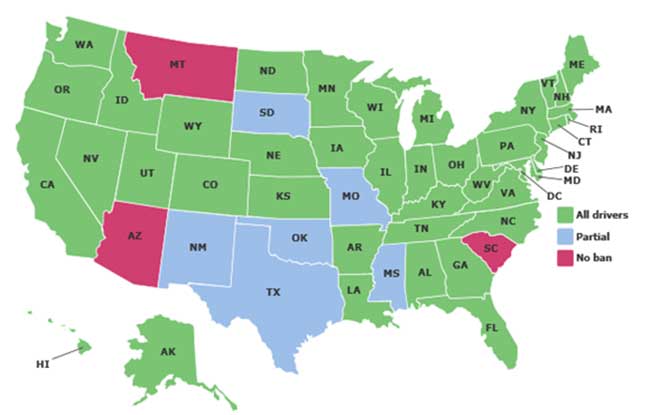We all intuitively understand that texting while driving is dangerous – but a look at the statistics shows just how frighteningly dangerous (and pervasive) texting while driving is. According to various governmental and insurance industry studies, texting while driving accounts for 25% of all car accidents. Translated differently: that’s 1.6 million crashes, and 330,000 injuries. A National Highway and Transportation Administration study claims those who actively text while driving are 23 times more likely to cause an accident than those who don’t – the same effect of drinking four beers and then getting behind the wheel.
Freshly minted teenage drivers, already inexperienced on the road, are even more dangerous while texting. And, to make matters worse, they have a false sense of confidence in their abilities: a full 77% of young drivers are “somewhat or very confident” they can safely text and drive – yet 13% of teens involved in accidents admit to using their phone at the time of the crash.
State Laws Lagging Behind the Data
Despite these dire figures, state laws are a hodgepodge of differing regulations around cell phone usage while driving. Only 9 states (and D.C.) have an outright ban on all handheld phone usage and there are 27 states that fail to have an outright ban on texting behind the wheel. See the map below from Texting and Driving Safety for details:

Some states are aggressively working to curb texting and driving. A recent case in New Jersey held that the sender of a text message to a recipient they know to be driving can be held liable for an accident caused by the driver. New Jersey has taken the lead in a regulatory approach to texting and driving – making it a crime punishable by up to 10 years in prison and fines of up to $150,000 for those causing an injury while under the influence of their phone. New Jersey’s regulatory approach will be modeled across the US. According to attorney Clay Hasbrook, “Some states may wait until more fatal accidents pile up, or if a particularly tragic one hits the news and grabs the public’s attention, but expect most states to start cracking down on distracted driving similar to intoxicated driver laws.”
Even cell phone providers are working to reduce texting and driving. Verizon and AT&T are both pushing the “It can Wait” advertising campaign. AT&T has released smartphone apps for both Android and Blackberry smartphones. The app, DriveMode works by automatically replying to incoming texts letting the sender know the recipient is driving when the phone is travelling at more than 25 mph. CellControl – a company dedicated exclusively to safe driving apps provides advanced texting and driving blocking as well as cell phone monitoring for both families and commercial fleets.
There are plenty of solutions to block texting and driving before the nightmare scenario occurs. The simplest? Put the phone down – It Can Wait!

